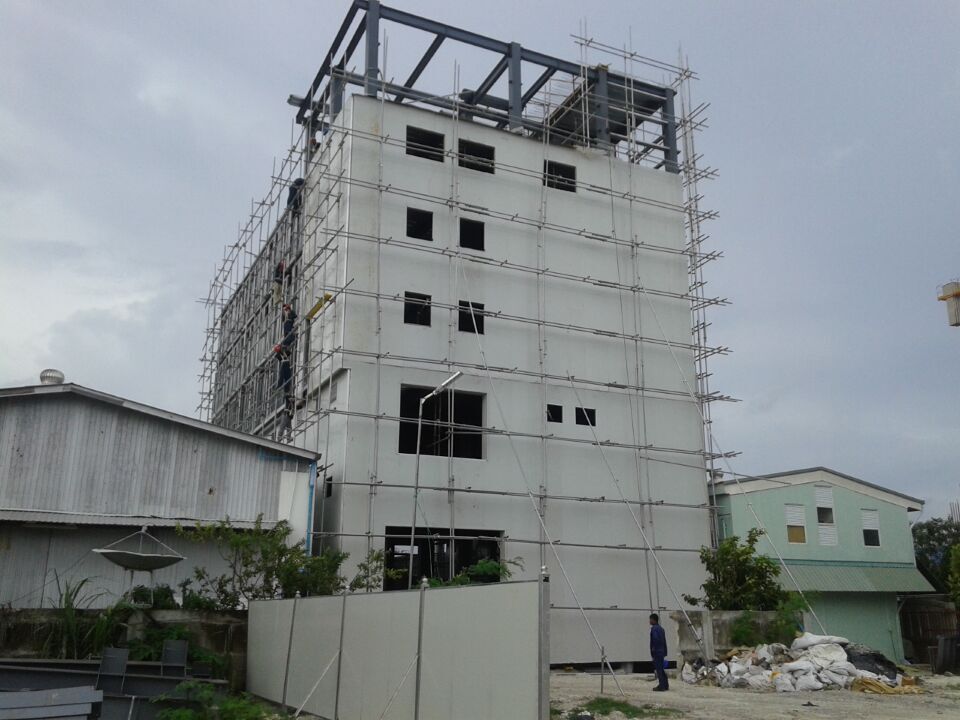The world is characterized by constant change. Yet some elements of our built environment seem immutable and timeless – the steel frames of skyscrapers, bridges and factories that form the industrial backdrop of the modern city. However, beneath their enduring forms lies a material that is inherently malleable: steel.
Steel’s ability to be manipulated into an infinite variety of shapes, while also maintaining its structural integrity, makes it the perfect medium for architecture that must balance permanence with responsiveness to evolving needs. From stadiums to factories to single-family steel structure houses built by contractors like the Lida Group, steel structures exhibit a versatility embedded in the material itself.
The history of architecture is filled with examples of how steel construction has enabled new spatial concepts, technological progress and social change. When steel production techniques advanced in the late 19th century, it allowed architects like Gustave Eiffel to create lightweight metal framing systems for his famous tower and transform the Parisian skyline.In the early 20th century, metal buildings like Rudolf Schindler’s steel frame Kings Road House pioneered the open floorplans that came to define modern architecture.

Steel structures continue to enable architectural fluidity and adaptability. Millions of metal buildings, from single storey warehouses to 40-story apartment blocks, are part of the built environment developed by contractors around the world . Yet the seemingly immutable forms they create can easily be altered as needs evolve, allowing internal spaces to morph and change function over time.
The key enabler of this resilience lies in steel’s malleability. Steel,an alloy of iron and carbon, can be heated, hammered, rolled, molded and welded into myriad shapes while retaining its corrosion resistance and ability to support heavy loads. This makes steel the perfect feedstock to create forgiving,long-lasting structures that can accommodate changing spatial demands.
While many buildings face high costs and disruption when reconfigured, metal structures can be retrofitted and modified quite easily. Non-load bearing interior walls and added floors can be implemented without compromising the structural steel frame,creating an architecture of “planning flexibility” that adapts to new program requirements over decades of use.

This ability to transform spaces without destroying forms has allowed steel structures to weather revolutions in technology, lifestyle and business models. Factories built in the Industrial Age still stand, though their purposes and processes have changed dramatically. Office towers framed in steel optimize prime real estate by regularly reshaping floorplates to house different types of tenants. Even in the home, steel frame houses from the Lida Group can be easily expanded and customized to accommodate growing families or changing design tastes.
In a world of perpetual change,we often seek permanence in our built environments. Yet truly enduring architectures are those that accommodate evolution without losing their essential characters. The story of steel structures demonstrates that immutable forms can house malleable functions, reinventing themselves by leaning into the inherent versatility of their materials. As we build for an uncertain future, the lesson of malleable materials and immutable forms suggests a way forward: architecture that balances stability with the capacity for radical transformation, grounded in the inherent duality of steel.
In summary, steel structures illustrate how malleable materials can create immutable forms that withstand the test of time. Steel’s unique combination of plasticity and strength allows it to be reshaped endlessly while maintaining structural integrity,producing architectures of “planning flexibility” that adapt to changing needs over decades of use. As we build for an uncertain future, steel teaches the valuable lesson that truly enduring forms are shaped by materials that can reinvent themselves,balancing stability with the capacity for revolution through versatility inherent in their composition.

Related news
-
A Framework for the Future: Creating Sustainable Steel Infrastructure
2023-08-04 17:18:59
-
Strength Within Simplicity: The Elegance of Essential Steel Structures
2023-08-04 16:46:20
-
Balancing Heritage and Innovation: Blending Old and New in Steel-Framed Architecture
2023-08-04 16:50:48
contact us
- Tel: +86-532-88966982
- Whatsapp: +86-13793209022
- E-mail: sales@lidajituan.com


